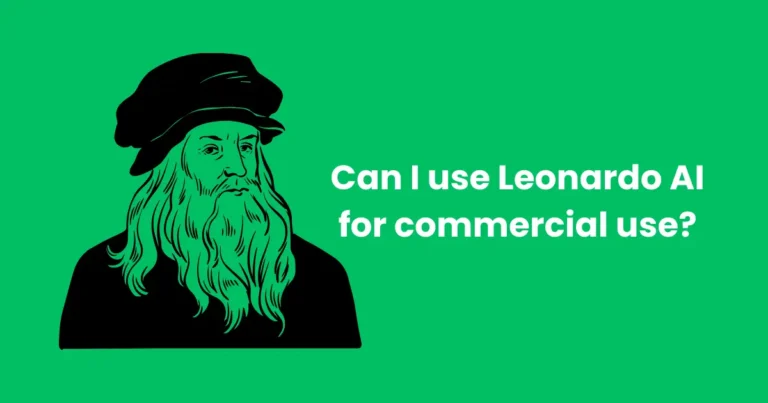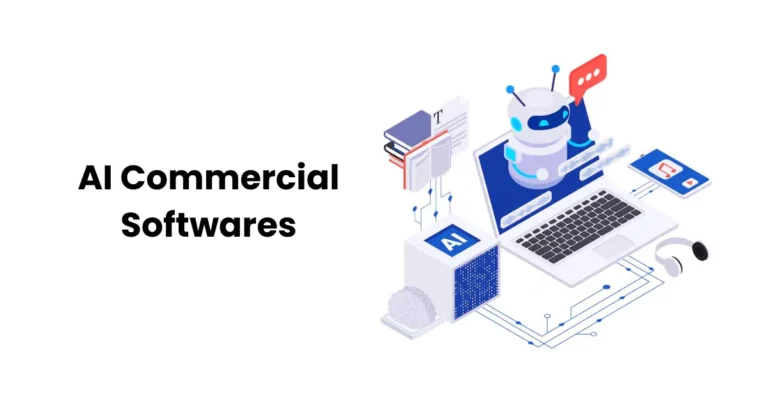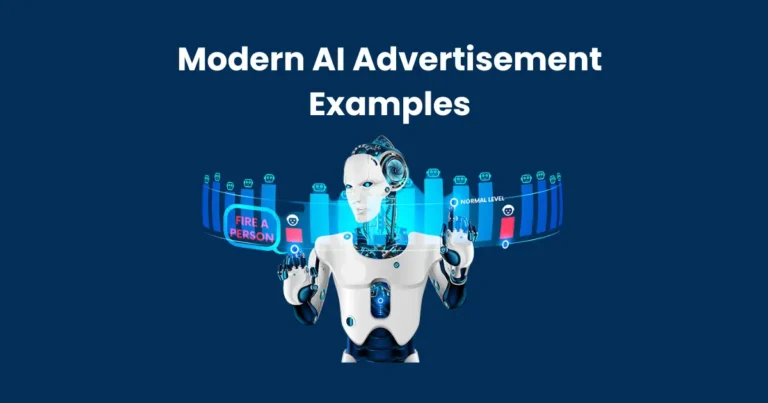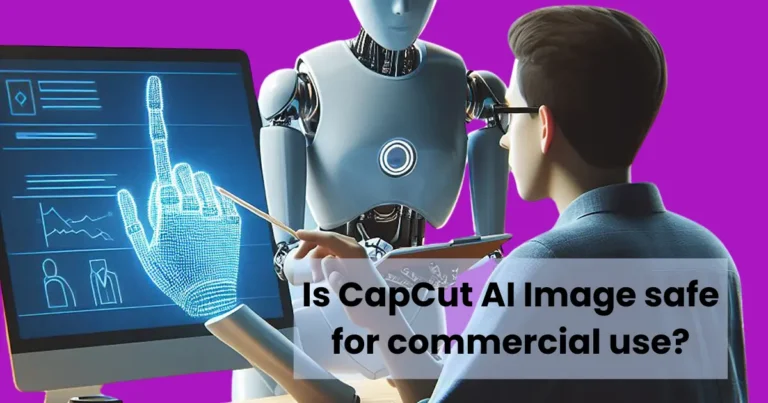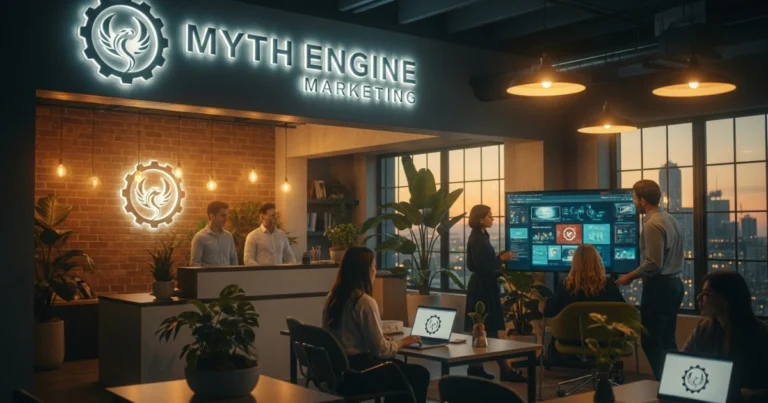How to Make a Commercial with AI | How to Create Engaging AI Video Ads in 2024
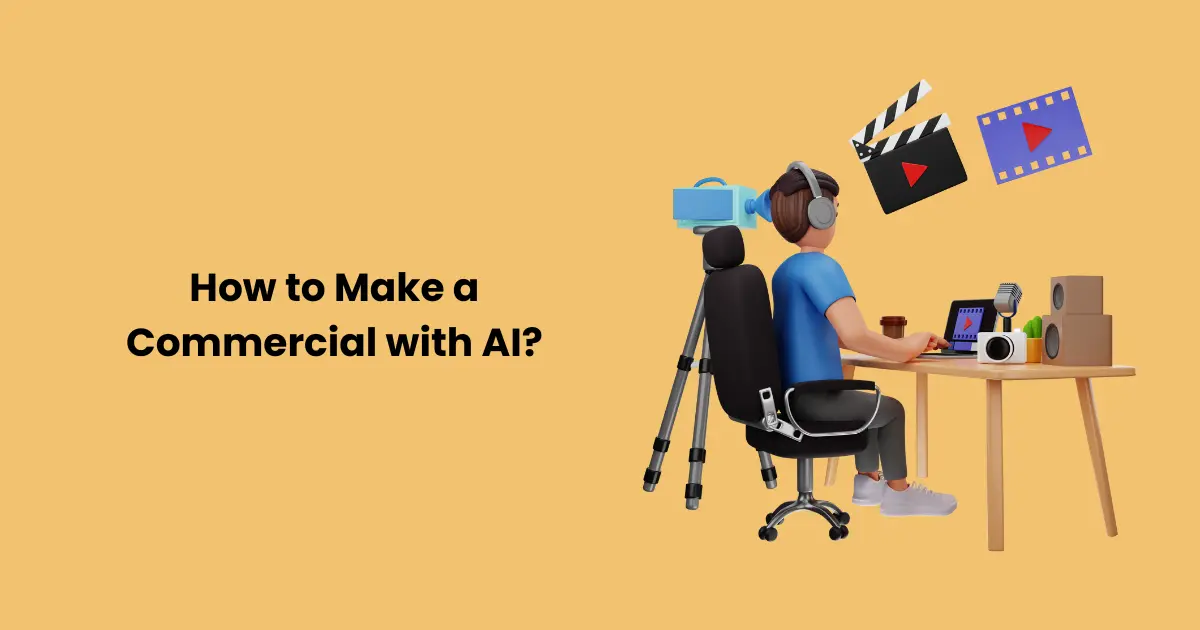
Contents
- 1 Why Use AI for Commercials?
- 2 Tools to Make a Commercial with AI
- 3 Step-by-Step Guide on How to Make a Commercial with AI
- 4 Tips for a Successful AI-Powered Commercials
- 4.1 1. Keep Your Brand Identity Consistent
- 4.2 2. Focus on Simplicity and Clarity
- 4.3 3. Personalize Your Commercial for Your Audience
- 4.4 4. Optimize for Multiple Platforms
- 4.5 5. Use Data to Drive Decisions
- 4.6 6. Enhance Emotional Appeal with AI-Generated Voiceovers and Music
- 4.7 7. Test and Optimize Your Commercial Regularly
- 5 Limitations of Using AI for Commercials
In today’s fast-paced digital world, businesses are increasingly turning to Artificial Intelligence (AI) to streamline their operations, and one of the most exciting applications is in commercial production. AI offers innovative solutions that can significantly reduce the time, effort, and cost of creating professional commercials. Whether you’re a small business or a large enterprise, learning how to make a commercial with AI can give you a competitive edge, enabling you to create high-quality ads with minimal resources.
AI technology has revolutionized the traditional methods of making commercials by automating key processes such as scriptwriting, video creation, voiceovers, and editing. In this article, we’ll walk you through the steps of how to make a commercial with AI, explore the tools that can help you along the way, and provide tips for ensuring your commercial stands out in today’s crowded marketplace. Whether you’re a marketer, a business owner, or a content creator, mastering AI for commercial production can elevate your advertising strategy to new heights.
By understanding the powerful capabilities of AI, you can create engaging, efficient, and cost-effective commercials that effectively communicate your brand message.
Why Use AI for Commercials?
AI has become a game-changer in the world of commercial production, offering a wide range of benefits that traditional methods simply can’t match. From automating complex tasks to enhancing creativity, using AI for commercials provides numerous advantages. Here’s why you should consider incorporating AI into your commercial-making process:
Cost-Effective Production
One of the main reasons to use AI for commercials is cost savings. Traditional commercial production often requires a large team of professionals, expensive equipment, and long hours of work. AI tools can streamline much of the production process, reducing the need for expensive resources and lowering overall costs. With AI, you can create high-quality commercials without breaking the bank.
Faster Turnaround Time
AI speeds up various stages of commercial production, from scriptwriting to editing. This accelerated workflow allows businesses to get their ads out faster, keeping up with the fast-paced nature of digital marketing. Whether you’re running time-sensitive campaigns or need to react to market changes, AI tools help you create commercials quickly and efficiently.
Enhanced Creativity
AI doesn’t just automate mundane tasks—it can also foster creativity. With AI-powered scriptwriters, video editors, and voice generators, you can explore innovative ideas and approaches that may not have been possible with traditional methods. AI helps create fresh and engaging content that resonates with your target audience.
Personalization and Targeting
AI enables more personalized and targeted commercials by analyzing audience data and tailoring content to specific demographics. With this precision, you can create more effective commercials that connect with your audience on a deeper level, improving engagement and conversion rates.
Accessibility for All Businesses
AI tools have made commercial production accessible to businesses of all sizes. Small and medium-sized businesses that previously struggled with high production costs can now produce high-quality commercials without needing extensive resources or expertise. This levels the playing field and allows more businesses to compete in the advertising space.
Data-Driven Insights
AI can analyze performance metrics in real-time, providing valuable insights into how your commercial is performing. These insights allow you to make quick adjustments to optimize your ads for better results. By leveraging AI, you can continuously improve the effectiveness of your commercials.
Consistency and Quality
AI tools help maintain consistency across your commercial production. Whether it’s maintaining brand voice, visual style, or editing techniques, AI ensures that all elements of your commercial align with your branding guidelines, resulting in a polished and professional final product.
Incorporating AI into your commercial production process not only improves efficiency and reduces costs, but it also opens up new creative possibilities and allows for more precise targeting. As AI continues to evolve, its role in shaping the future of advertising will only grow, making it an essential tool for any business looking to stay ahead of the competition.
Tools to Make a Commercial with AI
Creating a commercial with AI is now more accessible than ever, thanks to a variety of advanced tools that automate various aspects of the production process. From scriptwriting and video creation to voiceovers and editing, these tools can help you create high-quality commercials with minimal effort. Here are some of the most popular AI tools to make a commercial with AI:

1. AI Video Editing Tools
AI video editing tools are essential for speeding up the video production process while maintaining high quality. These tools use artificial intelligence to automate editing tasks such as cutting, trimming, and enhancing footage. They can also assist in color correction, stabilization, and adding effects to create a professional-looking commercial.
- Magisto: This AI-driven video editor analyzes raw footage and automatically edits it into a polished commercial. It uses machine learning to recognize key moments and create an engaging storyline.
- Pictory: This platform uses AI to turn long-form content like blogs or podcasts into short, impactful videos. Pictory can automatically add captions, background music, and images to make your commercial stand out.
- Adobe Premiere Pro with AI Features: Adobe’s AI-driven features like Auto Reframe and Scene Edit Detection help speed up editing, making it easier to create a commercial tailored to different social media formats or specific audience needs.
2. AI Voiceover Tools
A powerful voiceover is often a crucial part of a commercial, but recording and editing can be time-consuming. AI voiceover tools can generate realistic, human-like voices for your ads, saving you both time and money on hiring voice actors.
- Descript: Descript’s AI-powered voice generation tools allow you to type out a script, and the software will read it with natural-sounding voices. It also offers transcription and editing features to tweak your commercial’s audio.
- Murf.ai: Murf is an AI voiceover tool that provides high-quality voiceovers in multiple languages and tones, making it easy to match your commercial’s voice to the brand’s personality. It’s perfect for creating professional-sounding narrations without needing a human voice actor.
- Lovo.ai: Lovo offers an AI-powered voice generator with a variety of voices, tones, and accents. You can customize the voice for different types of commercials, ensuring your message resonates with your target audience.
3. AI Scriptwriting Tools
AI scriptwriting tools help you generate compelling and effective commercial scripts with ease. These tools can assist in creating engaging dialogues, taglines, and ad copy, all tailored to your brand’s voice and message.
- Copy.ai: Copy.ai uses AI to generate copy for various formats, including commercials. You can provide a brief description, and the AI will create multiple script variations to choose from. It’s a quick way to generate ideas for your commercial script.
- Jasper.ai: Jasper is a popular AI writing assistant that can help craft commercial scripts that grab attention and convey your message effectively. With its templates, you can generate ad scripts, social media posts, and more.
- Writesonic: Writesonic is another powerful AI tool for generating marketing copy, including commercial scripts. It offers different tones and styles, helping you align the script with your brand’s voice.
4. AI Animation Tools
If you want to add animation to your commercial, AI animation tools can save you time by automating much of the process. These tools use AI to generate dynamic animations, characters, and environments based on your input.
- Animoto: This tool simplifies the animation process, allowing you to create animated commercials by selecting templates, uploading assets, and customizing the look of the video. Animoto uses AI to optimize your commercial’s flow.
- Vyond: Vyond is an AI-powered animation tool that enables you to create engaging animated videos for your commercial. With a wide range of pre-built templates and characters, you can easily produce a high-quality ad with minimal effort.
- Toonly: Toonly is another AI animation tool designed for creating explainer videos and commercials. It uses drag-and-drop features to generate professional animations, with no animation experience required.
5. AI Music and Sound Tools
The right background music and sound effects can elevate your commercial’s emotional impact. AI-driven music tools allow you to generate royalty-free music or adjust soundtracks to perfectly complement your video.
- Amper Music: Amper is an AI music creation tool that generates custom tracks for commercials. You can select the style, mood, and tempo, and the AI will compose a unique music track tailored to your commercial.
- AIVA: AIVA (Artificial Intelligence Virtual Artist) is an AI tool that composes original music for commercials. You can specify the type of commercial you’re creating, and AIVA will generate a suitable soundtrack.
- Epidemic Sound: While not entirely AI-powered, Epidemic Sound’s AI-driven recommendation system suggests the perfect royalty-free music tracks for your commercial based on mood, genre, and pacing.
6. AI Analytics and Optimization Tools
Once your commercial is live, AI tools can analyze its performance and offer insights to optimize its effectiveness. These tools help you measure the success of your commercial and make adjustments to improve ROI.
- Google Analytics: Google’s AI-driven analytics platform provides real-time insights into how your commercial is performing across different channels. It can track viewer engagement, conversions, and other key metrics, allowing you to optimize your campaigns.
- HubSpot: HubSpot’s AI tools can help you track the performance of your commercial, providing data-driven insights to improve your targeting and effectiveness. It offers AI-powered marketing automation to streamline the entire process.
There are a wide range of AI tools available to assist in every step of the commercial creation process, from scriptwriting and video production to voiceovers, animation, and optimization. By leveraging the power of AI, you can produce high-quality commercials more efficiently and at a fraction of the cost of traditional methods. Whether you’re a small business owner or part of a large marketing team, these AI tools can help you create commercials that stand out and effectively reach your audience.
Step-by-Step Guide on How to Make a Commercial with AI
Creating a commercial with AI can be a seamless process when you follow a structured approach. AI tools can assist with everything from generating scripts to editing videos, saving time and reducing production costs. Here’s a step-by-step guide on how to make a commercial with AI:

Step 1: Define Your Objectives
Before diving into the technical aspects of commercial creation, you need to clearly define your objectives. What is the goal of the commercial? Do you want to increase brand awareness, promote a specific product, or drive sales? Setting clear objectives will guide the entire process and help ensure your commercial resonates with your target audience.
- Target Audience: Identify who you’re speaking to. Are they millennials, professionals, or parents? This will influence your tone, visuals, and messaging.
- Key Message: What is the core message you want to convey? Focus on one main idea to avoid overwhelming viewers with too much information.
- Call to Action: What action do you want viewers to take after watching your commercial? This could be making a purchase, signing up for a newsletter, or visiting your website.
Step 2: Create a Script Using AI
A compelling script is essential for any successful commercial. Using AI scriptwriting tools can help you create engaging scripts that match your brand voice and effectively deliver your message.
- Choose an AI Scriptwriting Tool: Use platforms like Copy.ai, Jasper.ai, or Writesonic to generate commercial scripts. These tools allow you to input your brand’s information, and the AI will provide multiple script options based on your input.
- Refine the Script: Once the AI generates the script, make any necessary adjustments to ensure it aligns with your vision. Consider the tone of voice and pacing—make sure it’s compelling and easy to follow.
- Personalization: Tailor the script based on the target audience and ensure it includes a strong call-to-action (CTA). AI tools can help you generate variations of the script to test different approaches.
Step 3: Generate Visual Content with AI Tools
The next step is to create the visual elements of your commercial. AI video editing tools can automate much of this process by enhancing footage, adding effects, and creating animations.
- Select AI Video Creation Tools: Platforms like Pictory, Magisto, and Animoto use AI to help you edit and compile video clips quickly. You can upload raw footage or use stock footage and let the AI generate an engaging video.
- Use AI to Generate Animations: If your commercial requires animation, use tools like Vyond or Toonly to create animated characters and scenes. These tools are especially useful for explainer videos or brand storytelling.
- Ensure Visual Consistency: Make sure that the visual elements align with your brand’s aesthetic and message. AI tools can assist with color correction, framing, and even selecting the right shot sequences.
Step 4: Add Voiceovers and Background Music
An effective commercial requires a strong voiceover and fitting background music to create the right emotional tone. AI tools can automate this process as well.
- Choose an AI Voiceover Tool: Tools like Murf.ai, Descript, and Lovo.ai allow you to generate natural-sounding voiceovers by simply typing in your script. You can customize the voice’s tone, pitch, and language to match your brand’s persona.
- Select Background Music: Music plays a key role in setting the mood for your commercial. AI tools like Amper Music and AIVA can create royalty-free music tracks tailored to the emotional tone you want to convey. Alternatively, use platforms like Epidemic Sound for AI-powered music recommendations.
- Sync Audio and Visuals: AI tools will often help synchronize your voiceover with visuals, ensuring that timing is perfect. Check the audio levels to ensure the voiceover and music complement each other without overpowering one another.
Step 5: Edit and Finalize Your Commercial
After assembling the footage, voiceovers, and music, it’s time to fine-tune your commercial. Editing is crucial to ensure the pacing, timing, and overall flow are smooth and effective.
- AI Editing Tools: Use AI-driven platforms like Adobe Premiere Pro with auto-editing features, or Pictory to trim unnecessary footage, adjust the pacing, and enhance transitions. These tools can also suggest edits based on the content’s tone and flow.
- Check Consistency: Make sure the final video reflects your brand’s messaging and style consistently. AI can help with automated color grading, adding text overlays, and incorporating transitions that keep the video visually appealing.
- Optimize for Platforms: AI can help you create different versions of your commercial optimized for different platforms (YouTube, Instagram, Facebook, etc.). Ensure the video is formatted correctly for each platform’s specifications.
Step 6: Test and Optimize Your Commercial
Once your commercial is finalized, it’s important to test it before launching it on a wide scale. AI tools can help you measure the performance of your commercial and make any necessary adjustments to improve its effectiveness.
- Track Performance with AI: Use AI analytics tools like Google Analytics or HubSpot to track the commercial’s performance. These tools provide real-time insights into metrics such as viewer engagement, conversion rates, and audience retention.
- A/B Testing: You can use AI to run A/B tests and analyze which version of your commercial performs better with different audience segments. This allows you to fine-tune your approach and maximize your commercial’s impact.
- Make Adjustments: Based on the data, make necessary changes to optimize the commercial. For example, you might change the CTA, adjust the pacing, or even tweak the visuals based on what resonates most with your audience.
Making a commercial with AI is no longer a complex or expensive task. By following these steps and utilizing AI tools, you can create professional, engaging, and cost-effective commercials that align with your brand’s message and capture your audience’s attention. AI simplifies every stage of the production process, from scriptwriting and visual content creation to voiceovers and editing. With the power of AI, your commercials will not only be faster and more efficient but also more creative and impactful.
Tips for a Successful AI-Powered Commercials
Creating an effective AI-powered commercial involves more than just leveraging the right tools—it requires a thoughtful approach that balances automation with creativity. Here are some key tips to ensure your AI-generated commercial achieves the desired impact:

1. Keep Your Brand Identity Consistent
Even though AI can help automate much of the creative process, it’s essential to maintain consistency with your brand identity throughout the commercial. Make sure that the tone, messaging, visuals, and voiceover align with your established brand voice.
- Use AI to Generate Brand-Specific Content: Many AI tools, like Copy.ai or Jasper.ai, allow you to customize the generated script to reflect your brand’s tone and values. Tailor the voiceover and visuals to match your company’s visual identity and messaging.
- Stay On-Brand with Visuals and Colors: AI tools for video editing, such as Adobe Premiere Pro or Pictory, can help ensure that your video aligns with your brand’s color palette, logo placement, and overall aesthetic.
2. Focus on Simplicity and Clarity
AI can produce compelling scripts, but it’s crucial to ensure that your commercial is simple and clear. Aim for brevity and directness, ensuring that the core message is communicated effectively without overwhelming the viewer.
- Use Concise Messaging: When generating your script, focus on a clear and concise message. AI script generators can help, but you can always refine the output to cut out unnecessary jargon or lengthy explanations.
- Avoid Overcomplicated Visuals: AI video editing tools can create dynamic effects, but too many can distract from your key message. Use simple, clean visuals that enhance the core message without making the viewer feel overwhelmed.
3. Personalize Your Commercial for Your Audience
AI allows for deep personalization, which can greatly improve your commercial’s relevance and effectiveness. Tailor your commercial to resonate with the specific interests, demographics, and preferences of your target audience.
- Use AI to Segment Audiences: Tools like HubSpot or Google Analytics can help segment your audience based on their behavior and demographics. Create different versions of the commercial tailored to each audience segment to increase engagement and conversion rates.
- Incorporate Personalization in the Script: AI-powered copywriting tools like Copy.ai can allow you to generate copy that speaks directly to specific audience types, making your commercial more engaging and personalized.
4. Optimize for Multiple Platforms
Different platforms have varying requirements for video formats, durations, and styles. AI can assist in adapting your commercial to suit these platforms and increase its performance.
- AI Video Resizing: Tools like Pictory and Adobe Premiere Pro allow you to create multiple versions of the same commercial, optimized for Instagram, YouTube, TikTok, or Facebook. You can change the aspect ratio, trimming the video to fit the platform’s preferences.
- Tailor Your CTA for Each Platform: The call to action (CTA) should be clear and relevant to the platform. AI tools can suggest optimal CTAs based on platform analytics. For example, a CTA for Instagram might encourage viewers to “Swipe Up,” while YouTube may direct users to “Click the Link Below.”
5. Use Data to Drive Decisions
AI tools don’t just help you create commercials—they can also help you optimize your ad campaigns. By using AI-driven analytics, you can measure the success of your commercial and adjust it to improve performance.
- Track Engagement Metrics: After launching your commercial, monitor key performance indicators (KPIs) such as view counts, click-through rates (CTR), and conversion rates. Tools like Google Analytics or HubSpot provide insights on how well your ad is performing.
- A/B Testing: Conduct A/B tests with different versions of your commercial to find out which one resonates better with your audience. AI-powered platforms can help you create multiple variations and track their performance to choose the best one.
6. Enhance Emotional Appeal with AI-Generated Voiceovers and Music
The emotional tone of your commercial plays a significant role in how it connects with your audience. AI voiceovers and music tools can help you achieve the right emotional impact without the need for professional voice actors or expensive music tracks.
- Choose the Right Voice: AI tools like Murf.ai or Descript can generate realistic, natural-sounding voiceovers in different tones and languages. Choose a voice that complements the emotional tone of your commercial—whether it’s friendly, authoritative, or enthusiastic.
- Background Music to Set the Mood: AI music generators like Amper Music or AIVA can help you create custom music tracks that evoke the right emotions in your audience. Whether it’s a calming melody or an upbeat tune, the right background music can significantly enhance the emotional appeal of your commercial.
7. Test and Optimize Your Commercial Regularly
Once your AI-powered commercial is live, continue testing and optimizing to ensure its continued success. AI tools provide real-time analytics that allow you to make informed decisions for future improvements.
- Monitor Viewer Feedback: Watch for viewer comments, likes, shares, and other engagement metrics across various platforms. This data can help you adjust the pacing, visuals, and even the CTA in future campaigns.
- Adjust Based on Insights: Use insights from tools like Google Analytics to adjust the targeting, format, or even the voiceover style. AI can give you immediate feedback that you can use to optimize your campaign for maximum ROI.
By following these tips, you can create a successful AI-powered commercial that not only stands out but also delivers measurable results. Balancing creativity with AI tools—while maintaining your brand identity, personalizing the message, and optimizing across platforms—will help ensure that your commercial resonates with your audience and meets your marketing goals. With the power of AI, you can streamline the entire production process, allowing for more time to focus on strategy and creativity, all while delivering high-quality, engaging commercials.
Limitations of Using AI for Commercials
While AI offers numerous advantages in creating commercials, it’s important to recognize that there are also some limitations. Understanding these limitations can help you make informed decisions when incorporating AI into your commercial production process. Here are some of the key limitations:

1. Lack of Human Creativity
AI tools are powerful, but they still lack the depth of human creativity, intuition, and emotion. While AI can generate content based on patterns and data, it may struggle to capture the nuanced creativity needed to craft truly original or emotionally resonant commercials.
- Limited Emotional Depth: AI-generated content, such as scripts or voiceovers, may miss the emotional nuance that comes from human input. While AI can analyze sentiment and language, it cannot replicate the subtle emotional cues that make commercials resonate on a human level.
- Over-Reliance on Templates: AI tools often rely on templates or pre-existing patterns, which can lead to commercials that feel generic or formulaic. While this can speed up the production process, it may lack the uniqueness that sets your brand apart.
2. Quality Control and Human Oversight
AI can automate many aspects of commercial production, but it still requires human oversight to ensure quality control. AI tools may generate content quickly, but they cannot always ensure that the final product meets the highest creative or technical standards.
- Inaccurate or Unfit Outputs: AI-generated scripts, images, or voiceovers may not always fit the brand’s tone or messaging perfectly. Some AI tools may produce content that needs significant refinement to align with the commercial’s objectives.
- Limited Error Detection: AI can sometimes miss inconsistencies or errors in the content, especially when it comes to complex scenarios. Human review is still necessary to catch potential mistakes that AI might overlook.
3. Dependence on Data and Training
AI tools are only as good as the data they are trained on. If the AI hasn’t been exposed to sufficient or relevant data, it may generate content that’s irrelevant or even off-mark. AI models rely on historical data and trends, which might not always be ideal for breaking new ground.
- Bias in AI: If the AI’s training data contains biased or outdated information, it may inadvertently create content that reflects those biases. This can lead to commercials that do not resonate with a diverse or evolving audience.
- Data Dependency: AI tools require high-quality, relevant data to function effectively. Without the right input, the content generated by AI might lack relevance or fail to meet audience expectations.
4. Limited Contextual Understanding
AI lacks true understanding of context and culture. While AI can analyze vast amounts of data, it does not have the same level of context or cultural awareness as a human creator. This limitation can affect how AI-generated content is received by different audiences.
- Cultural Sensitivity: AI might not fully understand cultural nuances, which can lead to commercials that unintentionally offend or alienate certain groups. It’s essential for human creators to review the AI output for cultural appropriateness.
- Contextual Relevance: AI can struggle to understand the broader context of a commercial, such as current events, trends, or emerging consumer behavior. While it can generate content based on past data, it may not be able to react quickly to shifts in the cultural or market landscape.
5. Limited Customization
While AI tools offer a wide range of customization options, they may not provide the level of personalization or flexibility that a human designer or creative director can. If your commercial needs to be tailored to highly specific goals, an AI might not offer the precision or customization you need.
- Standardization of Content: AI-generated content can sometimes lack the flexibility required for high-level customization. While you can input basic parameters, there’s often a limit to how finely tuned the output can be.
- Creativity Constraints: AI tools can follow the patterns and data they’ve been programmed with, but they might not provide innovative ideas outside of established norms. This can limit the scope for creative experimentation.
6. Ethical Concerns
Using AI for creating commercials raises some ethical concerns, especially in terms of transparency, authenticity, and job displacement.
- Lack of Transparency: AI-created content may blur the line between human-generated and machine-generated media, which can lead to transparency issues. Audiences might feel deceived if they are not aware that an AI was used in the creation process.
- Job Displacement: As AI becomes more prevalent in creative industries, there are concerns that automation will lead to job losses for content creators, including writers, editors, and designers. While AI can assist in streamlining production, it cannot replace the need for human talent in the creative process.
7. Legal and Copyright Issues
AI-generated content can also present legal and copyright challenges. Determining who owns the rights to AI-generated content is still a gray area in many legal frameworks.
- Intellectual Property Ownership: If an AI generates a commercial, who owns the copyright to the content? The ambiguity around intellectual property rights for AI-generated content can cause legal complications, especially when the AI uses pre-existing materials or data for creation.
- Unintended Copyright Infringement: AI tools might inadvertently use copyrighted materials when generating content, which could lead to unintentional copyright infringement. It’s essential to monitor the AI’s outputs to ensure compliance with copyright laws.
AI has revolutionized the way commercials are created, offering increased efficiency, lower costs, and enhanced automation. However, it’s important to be aware of its limitations. From lacking emotional depth and creativity to facing ethical and legal challenges, AI-generated commercials still require human oversight, customization, and a deep understanding of brand identity. By combining AI tools with human creativity and strategic thinking, you can overcome these limitations and produce commercials that effectively engage and inspire your audience.
Conclusion
Incorporating AI into the process of making commercials offers significant benefits, including increased efficiency, cost-effectiveness, and the ability to automate many aspects of production. From scriptwriting to video editing, AI tools can streamline tasks and make the production process faster and more accessible. However, while AI can automate many processes, it still requires human oversight to ensure the final product aligns with your brand’s unique voice and objectives. Balancing AI automation with human creativity is crucial for crafting commercials that truly connect with audiences and drive results.
Ultimately, AI has the potential to revolutionize commercial production, but it’s important to recognize its limitations, such as the lack of deep emotional understanding and creativity. By leveraging the strengths of AI while maintaining a human touch, brands can create impactful, engaging commercials that resonate with their target audience. Whether you’re using AI to enhance efficiency or to personalize content for specific demographics, the combination of technology and creativity can take your commercial production to the next level.

